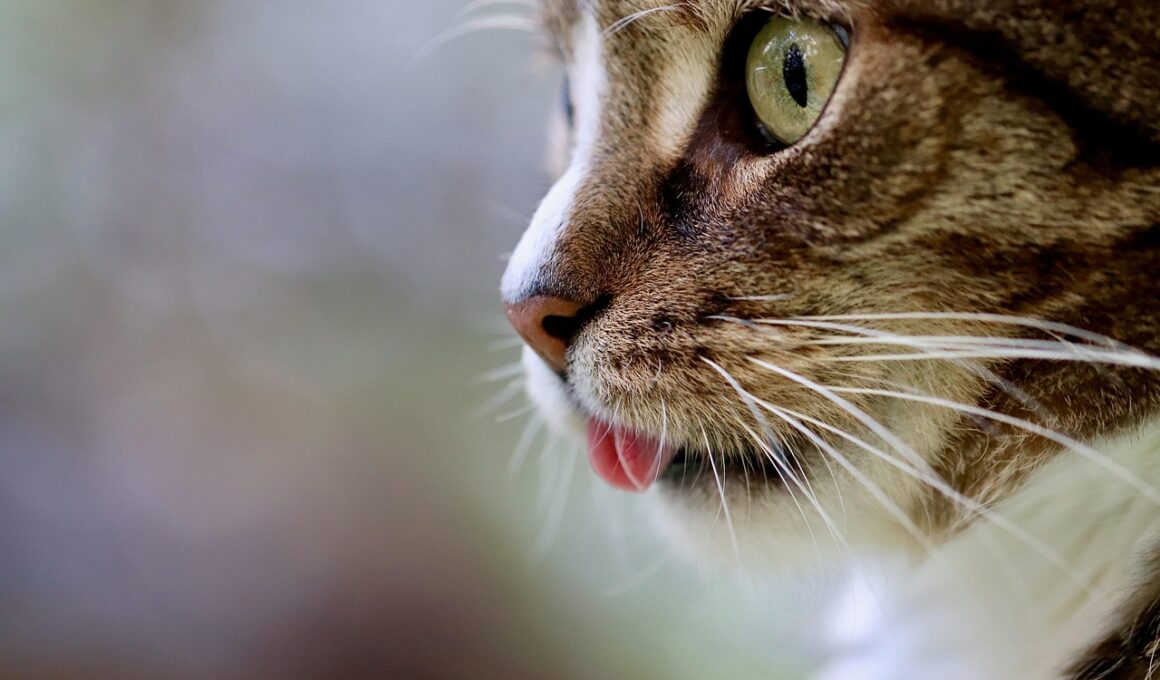When to Call the Vet: Key Assessment Signs in Cat Emergencies
In emergencies, understanding when to call the vet for your cat can make a significant difference. Cats are masters at hiding their discomfort, which complicates identifying severe issues. Start by observing their behavior closely. If your cat suddenly becomes lethargic, shows signs of distress, or is hiding away, these could be warning signs. Cats often retreat when they are feeling unwell. Next, assess their breathing. Rapid or labored breathing indicates that something is wrong and requires immediate attention. Check their gums; healthy gums should be a pink color. If they appear pale or blue, it’s essential to seek help right away. If your cat is vomiting excessively, especially if it’s more than once or contains blood, don’t delay in reaching out to your vet. Similarly, if your cat suffers from diarrhea, especially if it’s severe or lasts beyond a day, interference might be required. Keep a close watch on their water intake and eating habits too, as sudden changes could signal illness. Remember, trust your instincts; if you feel something is wrong, it’s always better to be safe and consult your veterinarian.
Besides behavioral changes, certain physical symptoms also indicate that you should consult a vet. Take note if your cat has injured a leg or paw. If they cannot walk properly or are reluctant to put weight on it, immediate attention is necessary to rule out fractures or severe sprains. Scratches or wounds can become infected quickly, so if you notice swelling or discharge, it’s time to seek help. Also, if your cat has a persistent sneeze or nasal discharge, assessing whether it appears congested or has difficulty breathing is crucial. Often, respiratory infections necessitate a veterinary examination, especially if the cat is older or has underlying health conditions. Furthermore, monitor for any signs of choking, like gagging or excessive pawing at the mouth; in these cases, an emergency call is vital. Another vital sign comes from changes in urination; cats in distress may exhibit straining, blood in the urine, or urinating in unusual places. Always be prepared for emergencies by locating your nearest vet clinic and keeping essential numbers readily available for peace of mind.
Recognizing Subtle Signs
Sometimes, subtle indicators can signal that your cat needs immediate veterinary care. It’s important to recognize these signs, as they can prevent complications. One primary indicator is a change in grooming habits. Cats are known for being meticulous groomers, so a neglect of grooming can indicate a general feeling of unwellness. Fur that appears matted or dirty should be assessed. Additionally, keep an eye on your cat’s vocalizations. Excessive meowing or unusual noises can indicate stress or pain. Pay attention to any sudden loss of appetite, as cessation of eating can lead to other health issues. Vomiting or regurgitating food with no evident cause requires assessment as well. If these behaviors persist, it’s an indicator that something isn’t right. The same goes for sudden weight loss or gain; anomalies in weight can point to grave health concerns. Don’t underestimate a sudden change in your feline friend’s demeanor. Ensure their litter box habits remain consistent as well, as changes can indicate urinary or digestive issues that need immediate investigation. Always remember, monitoring your cat regularly will familiarize you with their typical behaviors, making it easier to spot abnormalities.
Another key aspect of evaluating your cat’s health involves monitoring their hydration. Cats typically drink water daily, but dramatic changes in water intake, whether an increase or a decrease, could signal underlying issues that require veterinary attention. You should also observe their eating habits closely. Cats can lose their appetite quickly due to stress or illness. If your cat refuses to eat for more than a day, it raises concerns, particularly in cats with pre-existing health conditions, such as diabetes or kidney disease. Additionally, another critical sign often overlooked relates to your cat’s urine. If you notice your cat straining to urinate, presenting blood in the urine, or using the litter box frequently with little output, you must contact the vet. These signs could indicate a variety of ailments such as urinary blockages, which can be life-threatening if untreated. Recognizing early signs of distress is essential to ensuring your cat’s well-being. Make a habit of reviewing their grooming, eating, drinking, and bathroom habits regularly, fostering an understanding of what is normal for your feline friend. Familiarity with these patterns can help you act swiftly in emergencies.
When in Doubt, Call
Even if you hesitate, trust yourself and reach out to your veterinarian. If something feels amiss, do not ignore your instincts; err on the side of caution. Don’t let uncertainty prevent you from seeking help, as your cat’s life may hang in the balance. Consulting with a veterinary professional is invaluable, as they can assess symptoms and advise you on the next steps. Even what may seem like a minor issue could signify more significant problems. Gathering as much information as you can before the visit can also assist your vet in diagnosis. This includes keeping a record of your cat’s behavior, daily routines, food and water consumption, and any observed anomalies. The more specific can give context to the vet, aiding them in making accurate assessments. If your cat has pre-existing health conditions, inform your vet of these, as they may be relevant. Always consider that quick action can help avert potential fatalities. It’s essential to understand that during an emergency, your pet relies on you to recognize danger and take appropriate action. Ultimately, your cat’s well-being should always come first.
In concluding this discussion about recognizing when to call the vet for your cat, it’s crucial to remember that your cat’s health is paramount. Regular veterinary visits are vital for overall well-being, as they can catch issues before they escalate. Think of signs or visual cues as a key part of this assessment. Keep an eye out for potential changes in mood and behavior; the earlier you identify a problem, the higher the chance of successful treatment. Be vigilant about their daily habits, as even minor shifts can indicate significant health changes. Establish a good line of communication with your veterinarian, discussing any topics of concern, as well as routine check-ins. Together, these efforts create an informed environment to ensure that your feline friend remains happy and healthy. Developing proactive observation can significantly help in emergencies. Remember that a calm approach assists both you and your cat during stressful times. Lastly, trust your instincts. If there is something about your cat’s behavior that doesn’t feel normal, professional guidance is only a call away. Being attentive and proactive will ensure that your beloved companion receives the care they deserve.
Final Thoughts
In emergencies involving your cat, it’s essential to understand that time is often of the essence. Every minute spent deliberating can lead to complications that may worsen your cat’s condition. This means being knowledgeable about typical versus atypical behaviors is vital. Equip yourself to respond swiftly when seconds matter. Reaching out for help, regardless of how minor you think the situation may be, is always better than waiting. Having the right resources readily available can save valuable time. Make sure your vet’s contact information is accessible, and have directions to the clinic on hand. Vaccinations and preventive care are equally critical in maintaining your cat’s health; they ensure your furry friend stays protected from a range of illnesses. Regular check-ups help ensure that potential health issues are caught early. Building a solid relationship with your veterinarian fosters a better understanding of your cat’s individual needs. This rapport can prove invaluable in urgent situations. Stay educated about feline health, as an informed pet owner can make a substantial difference in emergencies. Ultimately, your attentiveness and readiness will help safeguard your cat’s health and longevity.
Being proactive goes beyond immediate assessment during emergencies; it also involves ongoing education about feline health. Knowledge of common health issues can ensure you are well-prepared. Arm yourself with resources about nutrition, behavior, and environmental safety for your cat to help create a nurturing atmosphere. Explore animal first aid courses or obtain pet first aid kits to be prepared for various scenarios. Also, maintaining communication with fellow cat owners and professionals can build a support network for guidance and assistance. Social media platforms or local community group discussions can provide insight into common cat behaviors and health concerns. Always seek reputable information from veterinary resources, whether online or through literature. It’s beneficial to develop a habit of sharing experiences, tips, or insights with fellow pet owners, as you may learn new techniques or strategies that help ensure your feline’s health. This collaborative spirit benefits everyone in the community. Besides participating in workshops or forums, remember to regularly check for updates regarding health recommendations for cats. Continue advocating for your cat’s well-being, as your commitment makes a difference in their quality of life.


